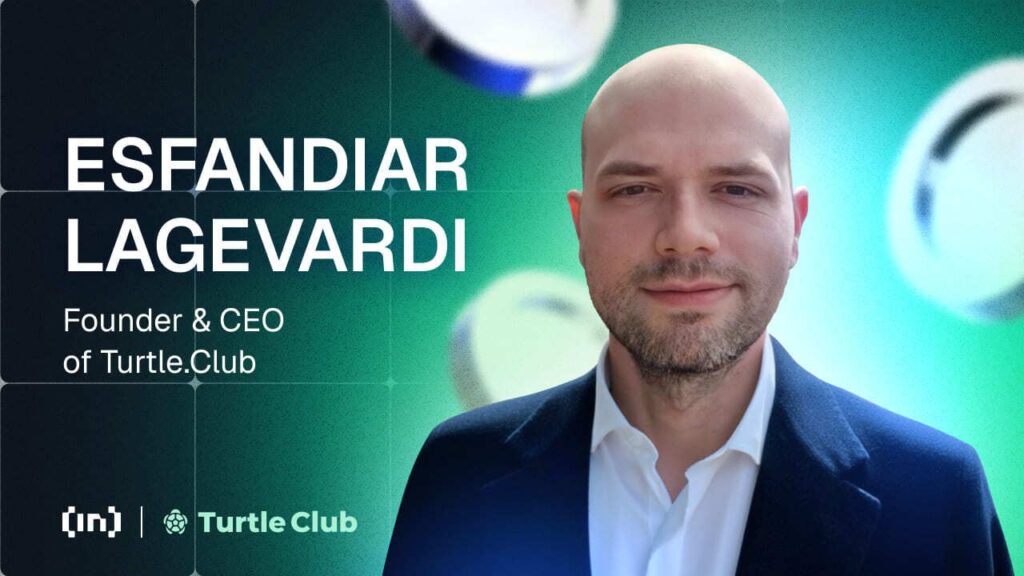Why DeFi Must Rethink Incentives for Sustainable Growth

For years, DeFi protocols have struggled with a fundamental challenge: attracting and retaining liquidity to support long-term ecosystem growth.
The prevailing approach—relying on yield farming, points programs, and predatory Liquidity Providers—has led to a cycle of unsustainable incentives, where liquidity providers (LPs) chase short-term rewards and exit as soon as incentives dry up. This phenomenon, often called mercenary capital, has created an unstable foundation for DeFi, making it difficult for protocols to maintain deep, reliable liquidity beyond the initial launch phase.
“Liquidity is the backbone of DeFi, yet the way we incentivize it is fundamentally broken. Too much focus has been placed on short-term attraction rather than long-term sustainability.” – Essi, Co-founder & CEO of Turtle Club
A new generation of incentive structures is emerging—one that prioritizes transparency, sustainability, and capital efficiency. By moving away from short-term farming and toward structured liquidity markets, pre-launch vaults, and trustless incentive models, DeFi can finally address its liquidity problem in a meaningful way.
The Liquidity Problem: Why DeFi Keeps Losing Capital
Misaligned Incentives Are Draining Liquidity
Attracting liquidity is essential for new DeFi protocols and blockchains, yet most have relied on flawed strategies that prioritize immediate liquidity acquisition over long-term retention. These include:
Exclusive Predatory Liquidity Deals – Early capital providers, including high-net-worth individuals (HNWIs) and market makers (MMs), are given preferential terms in exchange for liquidity provision. While effective in the short term, this approach lacks transparency and often concentrates liquidity in the hands of a few centralized players.
Yield Farming & Token Incentives – Many protocols distribute large amounts of native tokens to LPs to bootstrap liquidity. However, once rewards decline, liquidity exits, leaving dApps and protocols struggling with thin order books and high slippage.
Points Programs – The latest trend involves pre-launch points systems, where users deposit assets in exchange for speculative future rewards. The issue? Most of these systems lack transparency, leading to a rush of deposits followed by a liquidity exodus once tokenomics are revealed.
The core issue here is clear: LPs are not committed stakeholders—they are short-term speculators. This misalignment of incentives results in:
Liquidity disappears once incentives drop
Instability for dApps relying on deep liquidity
Excessive token emissions that dilute long-term holders
Inefficient capital deployment, where protocols overspend to retain liquidity without true commitment
This cycle has made it clear that DeFi needs a better way to bootstrap and sustain liquidity.
The Evolution of Liquidity Incentives
To build sustainable liquidity markets, DeFi must shift from temporary farming mechanisms to structured, trustless incentive models that align stakeholders for the long term. Here’s how that’s starting to happen.
1. Pre-Launch Liquidity Vaults: Encouraging Commitment, Not Speculation
A promising innovation in liquidity bootstrapping is pre-launch liquidity vaults—a mechanism that enables users to commit assets before a protocol goes live in exchange for structured incentives. Unlike traditional yield farming, these vaults:
Encourage active participation before launch – ensuring that liquidity providers are engaged stakeholders, not just short-term farmers.
Ensure efficient liquidity allocation – directing capital to key applications and maintaining healthy liquidity post-launch.
Reduce speculative uncertainty – offering transparent, predefined rewards rather than ambiguous points-based incentives.
By structuring liquidity ahead of time, pre-launch vaults can prevent the post-launch liquidity drain that has plagued DeFi for years.
2. On-Chain Liquidity Markets: Bringing Transparency to Incentives
Another key shift is the emergence of on-chain liquidity markets, which enable protocols and LPs to negotiate liquidity provision terms in a trustless and transparent way.
This model benefits both sides:
Liquidity providers gain clarity – They can see exactly what rewards they are receiving, for how long, and under what conditions.
Protocols reduce inefficiencies – By setting clear incentives, they can attract committed liquidity without wasting resources on unsustainable rewards.
By ensuring incentive structures are transparent, trustless, and market-driven, liquidity markets reduce rent-seeking behavior and prevent speculative capital from distorting long-term growth.
Rethinking DeFi’s Approach to Liquidity
If DeFi is to achieve sustainable growth, it must move beyond short-lived farming incentives and focus on long-term capital efficiency.
This means:
Moving away from mercenary liquidity – Protocols must attract LPs who see value beyond token emissions.
Designing incentives that last – Trustless and structured liquidity vaults ensure that capital stays productive.
Focusing on yield efficiency – Instead of excessive token emissions, protocols should optimize incentives for sustainable participation.
“The next phase of DeFi isn’t about attracting liquidity—it’s about keeping it. Sustainable liquidity must be built on transparency, efficiency, and aligned incentives.” – Essi, Co-founder & CEO of Turtle Club
The Future of Liquidity Markets: A New Paradigm for DeFi
The DeFi industry is at a turning point. Instead of relying on opaque liquidity deals, short-lived yield farming, and speculative points programs, the future lies in transparent, capital-efficient, and sustainable liquidity incentives.
By embracing trustless liquidity markets, structured pre-launch vaults, and fair incentive structures, DeFi can move beyond the boom-and-bust cycles of liquidity extraction and create ecosystems where both LPs and applications thrive.
For new protocols, the real challenge isn’t just how to attract liquidity—it’s how to build a system where liquidity providers, applications, and users benefit together in the long run.
The next generation of DeFi will be defined not by speculation, but by sustainability.
Disclaimer
In compliance with the Trust Project guidelines, this opinion article presents the author’s perspective and may not necessarily reflect the views of BeInCrypto. BeInCrypto remains committed to transparent reporting and upholding the highest standards of journalism. Readers are advised to verify information independently and consult with a professional before making decisions based on this content. Please note that our Terms and Conditions, Privacy Policy, and Disclaimers have been updated.














